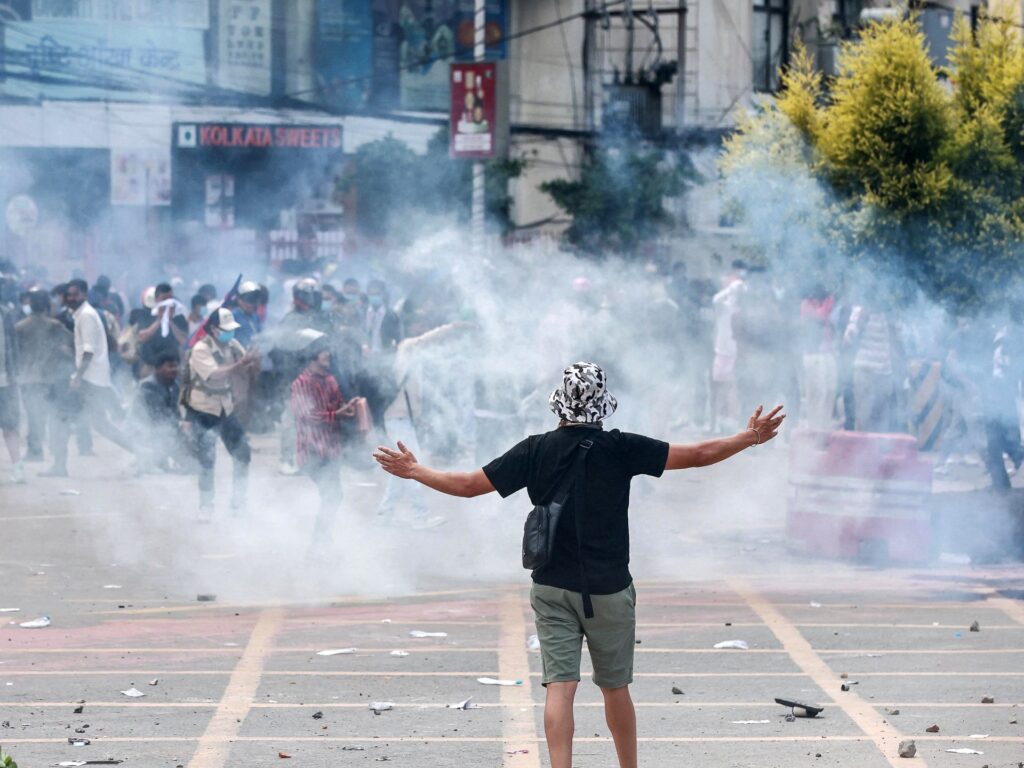A Kathmandu District Administration Office spokesperson says police used water cannon, batons and rubber bullets.
Published On 8 Sep 2025
At least 14 people have been killed and dozens injured during violent protests against the government’s social media ban and alleged corruption in Nepal, according to state-run TV, as police fired live rounds at young protesters and used tear gas and rubber bullets on them.
On Monday, some protesters forced their way into the parliament complex in the capital, Kathmandu, by breaking through a barricade, a local official said.
Recommended Stories
list of 3 itemsend of list
One protester told the ANI news agency that the police had been firing “indiscriminately”.
“[They] fired bullets which missed me but hit a friend who was standing behind me. He was hit in the hand,” the protester said.
Seven people died at the National Trauma Centre, chief medical superintendent Dr Badri Risal told The Associated Press news agency, adding there were 58 wounded in the country’s main hospital, located in the heart of Kathmandu.
“Many of them are in serious condition and appear to have been shot in the head and chest,” Risal said.
Families waited anxiously outside for news of their relatives while people gathered to donate blood.
According to Nepal Television, more than 50 people were injured.

‘Youths against corruption’
Thousands of young people, including students in their school and college uniforms, joined the protest, holding signs that read “Shut down corruption and not social media”, “Unban social media”, and “Youths against corruption”, as they marched through Kathmandu.
Ikshama Tumrok, a 20-year-old student, told the AFP news agency that she was protesting against the “authoritarian attitude” of the government.
“We want to see change. Others have endured this, but it has to end with our generation,” she said.
Last week, the government decided to block access to several social media platforms, including Facebook, YouTube and X, fuelling anger among young Nepalis.
According to officials, the decision was taken because platforms had failed to register with authorities in a crackdown on misuse, including fake social media accounts used to spread hate speech and fake news and commit fraud.
Organisers of the protests, which have been dubbed “demonstrations by Gen Z”, have said their civil disobedience reflects how the youth feel about the government decision.
One protester told ANI that this was “the protest by the new generation in Nepal”.
Muktiram Rijal, a spokesperson for the Kathmandu District Administration Office, told the Reuters news agency that the police had orders to use water cannon, batons and rubber bullets to control the crowd and that the army had been deployed.
According to Rijal, the curfew, which will remain in place until 10pm (16:15 GMT), has been extended to Kathmandu’s Singha Durbar area, which includes the prime minister’s office and other government buildings.
On Sunday, the government said in a statement that it respected freedom of thought and expression and was committed to “creating an environment for their protection and unfettered use”.

